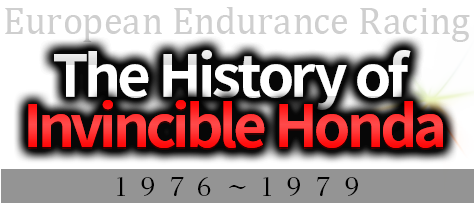- Honda Worldwide Home
- Motor Sports
- EWC
- The History of Invincible Honda
- 1977
Honda Endurance Racing and F.C.C. TSR Honda are participating in the 2016/2017 FIM Endurance World Championship (EWC) series with Honda CBR1000RR bikes. The series stages a total of 6 races, ending with the Suzuka 8hours FIM EWC. The European Endurance Championship series is the predecessor to the FIM EWC series. In the 1970’s, Honda won both the riders and the constructors titles for four consecutive years. The team was so strong, it was known as “the invincible.”
 Constant Wins but Constant Problems Plague Bol d'or Victory
Constant Wins but Constant Problems Plague Bol d'or Victory
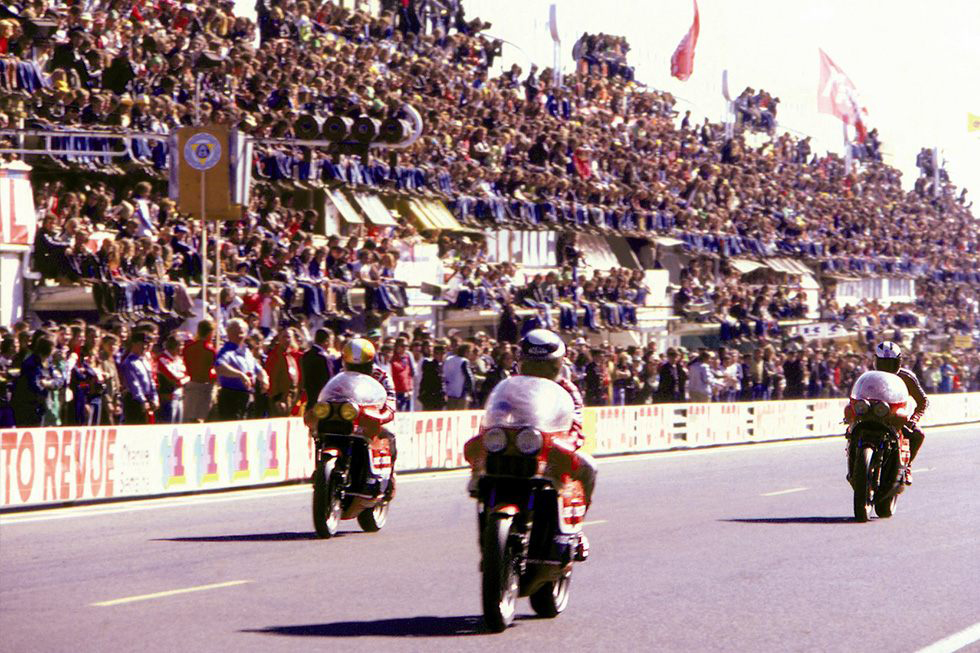
Christian Leon / RCB1000 (1977 Bol d'or 24 hours)
In top form, Leon and Chemarin dominated the Metit 1000km. Despite problems with the engine starting, dropping them to the back of the pack, they had regained the lead after 90 minutes. From there on it was an easy race for the pair, and at an average of 167.783km/h in 5 hours 59 minutes 57 seconds, was another victory for the RCB1000. The two Honda France machines, Luc/Soulas and Korhonen/Jack Buytaert (substitute for Huguet who had not fully recovered from injury in the previous race) finished 2nd and 3rd, followed by the Honda Britain Woods/Williams pair who were running in second place to the very end, but lost positions due to mechanical issues. This was yet another success for the Hondas and confidence booster for the Bol d'or 24 hours two weeks ahead.
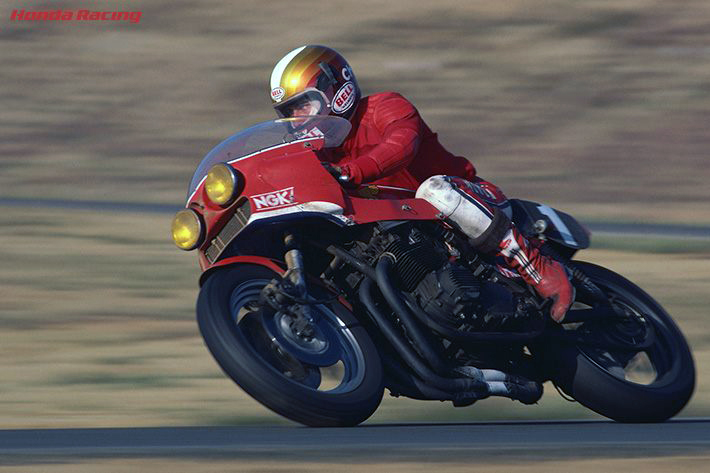
Jean-Claude Chemarin / RCB1000
(1977 Bol d'or 24 hours)
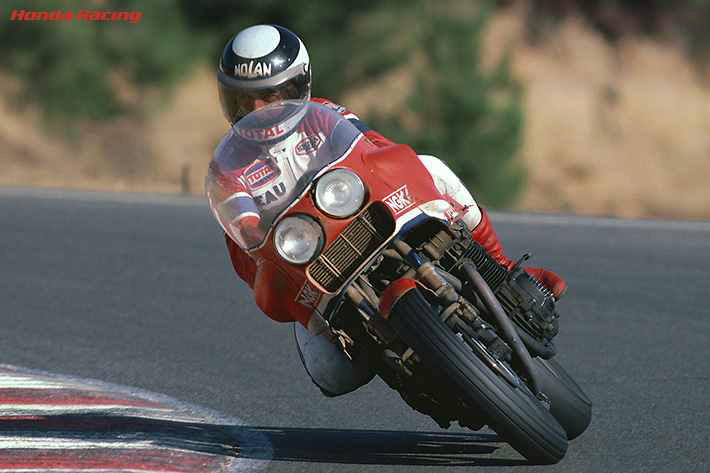
Christian Huguet / RCB1000
(1977 Bol d'or 24 hours)
10 hours into the race, despair set upon the crew of Honda France. Leon crashed and on returning to the pits, the mechanics screamed "It's all over! “ The tip of the crankshaft had broken off from the crash. The hollow crankshaft contained high-pressure oil to lubricate the con-rods was ruptured, preventing the engine from starting. Aika, quietly observing this situation, ordered the team to block the hole with a bolt. A French mechanic eased a 10mm bolt into the hole and then hit it hard with a hammer, securing it in position. The Japanese staff could not bear to watch this and screamed as the crankshaft might have dropped out of the other end, but eventually, the bolt was secured. 17 minutes later, the RCB was fighting again and returned to the race still in the lead.
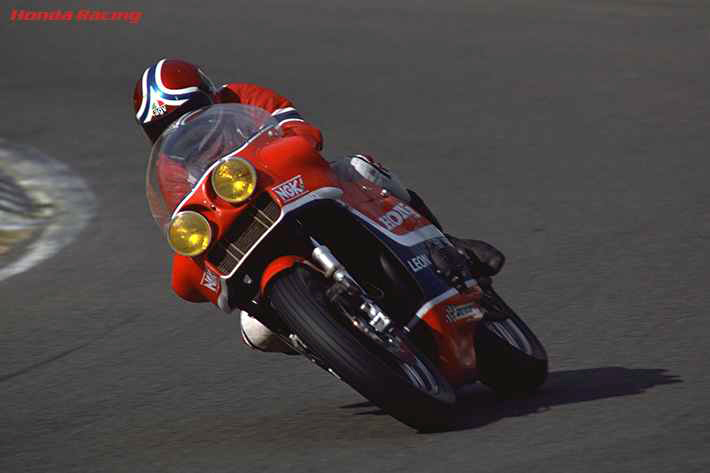
Christian Leon / RCB1000
(1977 Bol d'or 24 hours)
With Huguet absent, the Leon/Chemarin pair managed to rejoin the race as the leader, but their RCB1000 was in tatters, cowling missing. As dawn approached at around 7 am, Luc/Soulas in second place retired due to machine failure. The Sidemm Kawasaki team Balde/Frutchi moved up to second place. The Huguet/Korhonen had dropped to 7th place during the night, but had regained strength in the daylight and was 5th by 10 am, and 4th an hour later.
The battle between the leading Leon/Chemarin pair and the Sidemm Kawasaki team continued throughout the afternoon. With the gap at six laps, or approximately 12 minutes, anything could happen. While the heat was on for the lead, the Huguet/Korhonen pair had finally caught up with Eckert on the 22nd hour and moved up to 3rd place, with 2nd place in sight. By the final hour, Chemarin had managed to pull away from the Kawasaki and had built a unassailable 13 lap margin. The race was almost done and the Honda riders, staff, crowds all knew it was an another victory for the RCB1000s. The police had lined up beside the track to guard the riders from the excited crowd that might flow onto the track as soon as the race ended. Chemarin, tasting victory, ran in tandem with Honda Britain's Phil Reed and reduced pace for Huguet to catch up with them. Responding to the cheers and roars from the crowd, the three RCB1000s were in formation for the last few laps until the checkered flag greeted Chemarin, after 763 laps (3235.46km). Winning this race took Leon/Chemarin to the top of the rankings and Honda had achieved its second consecutive manufacturer's title.
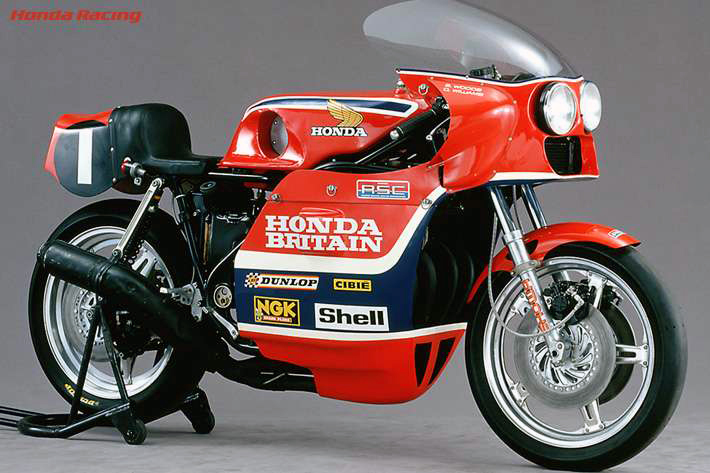
RCB1000 (481)
(1977 Bol d'or 24 hours winning machine)
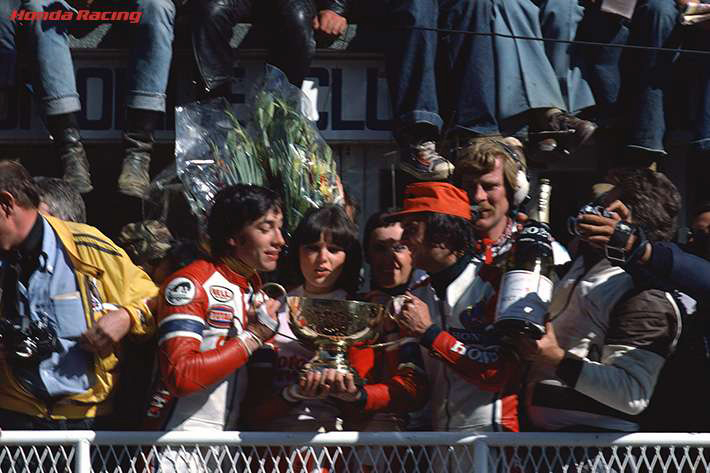
Christian Leon (right), Jean-Claude Chemarin (left)
(1977 Bol d'or 24 hours)
Kunitake Hara, RCB1000 body work designer, recalled the incident with the crankshaft and said later on, “It was a good example that even under most difficult circumstances, there is still a chance to win if you have a strong will. ” Because the incident with the crankshaft had such a strong impact on the team, other problems during the race were not even mentioned, despite there being were many other issues. One problem was a faulty generator requiring the battery to be replaced each hour: staff had to leave the track to purchase additional batteries in case they ran out. Without electricity, the bike was without tail lamps, so the team strapped a flashlight on the rear. As daylight receded, marshals came to warn the team about the lack of appropriate lights. Honda had clinched many victories that were fought through overcoming problems, large and small.
The 480 model’s cylinder strength issues were exacerbated with the development of the larger bore 480A and 481 models. The long stud bolts positioned wider apart were known to snap around the middle due to engine vibration. This problem was solved by remaking the stud bolts with a different material, but many similar problems occurred with the new engine.
Since Hondas won so often, the RCB1000s were known as the invincible fleet. On the other hand, pressure mounted in the pits, turning almost every race into a battlefield, as the pressure to keep on performing was so high, wearing both machine and rider out. The reality of RCB1000s and Honda Endurance Racing Team battles could no longer be hidden. Michihiko Aika said: "In a 24-hour endurance race crashes happen, and engines bored out to the limit were always braking down.”
Soon after the victory at Bol d'or, with barely time to catch their breath, the RCB1000s crossed the Dover channel to attend the last round of the European Endurance Championship in England, the Truxton 500 miles. The race was led by the local Honda Britain riders Woods/Williams from the start, and despite the heavy rainfall half way through the race, they kept up the pace to the end, bringing victory to Honda Britain. Huguet/Korhonen finished 2nd, and Leon/Chemarin, despite a crash, in 3rd place. Following the top three was Tony Rutter/Roger Marshall, Luc/Soulas and the Japauto team. Leon/Chemarin had won the rider's title and Honda had achieved both rider's and manufacturer's titles once again which, combined with Hondas dominating the top 6 places, gave Honda the perfect way to end its dominant season.
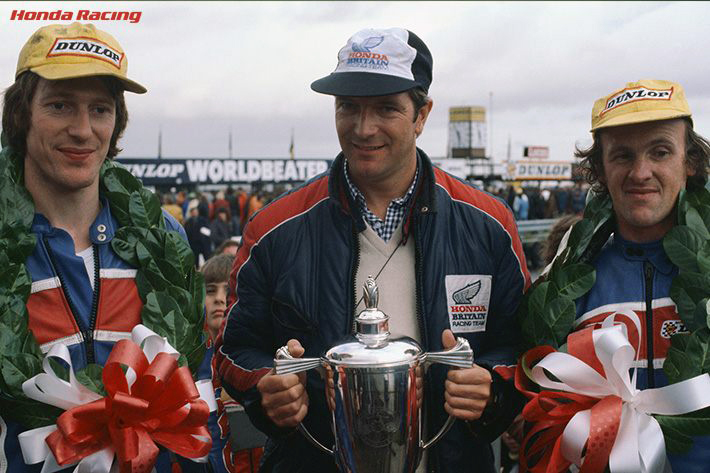
Charlie Williams (left), Stan Woods (right)
(1977 Thruxton 400 Miles)
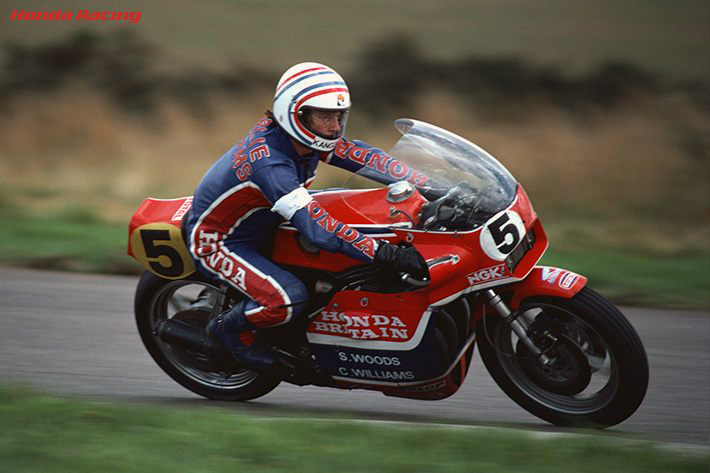
Charlie Williams / RCB1000
(1977 Thruxton 400 Miles)
Aside from the factory teams, local affiliate teams such as Japauto had been on the podium numerous times and boosted European interest in endurance racing. This was a result of Honda’s strong support for the local affiliates and dealer teams. Accomplishing their aim to win resulting in total domination, Honda shifted to a new plan in which the local teams were more in control of their own racing.
